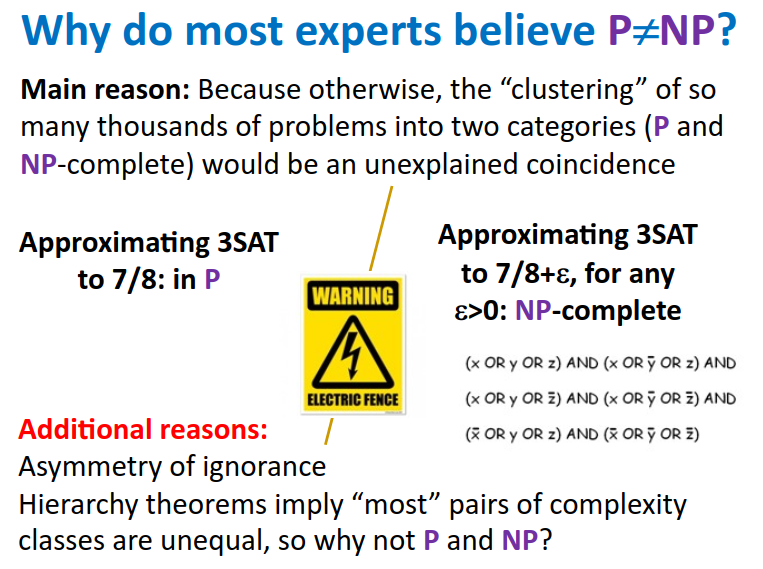The P vs NP problem represents one of the most tantalizing enigmas in theoretical computer science, holding profound implications for mathematics, cryptography, and complexity theory. To navigate the complexities of this problem, an extensive and varied array of literature is requisite. This article delineates the genres of literature one should explore to develop a comprehensive understanding and potentially contribute to the discourse surrounding the P vs NP problem.
As a preliminary exploration of this multifaceted issue, readers should begin with foundational texts that elucidate the principles of computational complexity theory. Primarily, textbooks such as Computers and Intractability: A Guide to the Theory of NP-Completeness by Michael Garey and David Johnson serve as essential resources, offering foundational knowledge on decision problems, polynomial-time reductions, and the intricacies of NP-completeness. This text, laden with illustrative examples, not only demystifies fundamental concepts but also posits the nuances of various established NP-complete problems, providing a strong grounding in the field.
Beyond textbooks, academic journals play a pivotal role in disseminating cutting-edge research. Journals such as Journal of the ACM, Theory of Computing, and SIAM Journal on Computing publish peer-reviewed articles that rigorously scrutinize various aspects of the P vs NP question. Engaging with these articles allows readers to digest the latest advancements and theoretical breakthroughs, ensuring an up-to-date perspective. Some articles delve into equivalences and separations between complexity classes, while others explore potential consequences of assuming P ≠ NP, instigating deeper philosophical inquiries into the nature of computation itself.
Moreover, the literature surrounding heuristics and approximation algorithms must not be overlooked. Works that explore algorithmic strategies offer practical insights into how problems traditionally categorized as intractable might be approached. Approximation Algorithms by Vijay V. Vazirani is a seminal text in this area, articulating methodologies for deriving estimations of solutions in polynomial time—even when exact solutions remain elusive. Such resources meticulously outline practical techniques that could, paradoxically, provide insights into the very structure of P vs NP.
For those whose interests veer towards the historical and philosophical dimensions of the P vs NP problem, an array of narrative accounts and exposés provide rich contextual frameworks. Gödel, Escher, Bach: An Eternal Golden Braid by Douglas Hofstadter intricately weaves together themes from mathematics, art, and music, serving as a profound philosophical exploration of intelligence, logic, and systems. This literature illuminates the interconnectedness of various fields, arguably offering a meta-framework in which to contextualize the implications of P vs NP.
Furthermore, seminal papers authored by key figures in the development of the theory of NP-completeness warrant careful study. The original article by Stephen Cook, titled “The Complexity of Theorem-Proving Procedures,” reveals the inception of these ideas and sets the stage for subsequent discourse. A thorough examination of Cook’s work elucidates the lineage of thought that has shaped much of modern computational complexity theory. Additionally, one must contemplate the contributions of other pioneers, such as John Nash and Richard Karp, whose insights continue to resonate within ongoing debates.
To acquire insight into the potential impacts of the P vs NP problem on cryptography, one must consult literature that elucidates the connections between complexity classes and cryptographic protocols. Works that discuss the implications of P = NP on public-key cryptography provide important cautionary tales about the foundational structure of secure communication in the digital age. Reading resources such as Introduction to Modern Cryptography by Jonathan Katz and Yehuda Lindell helps illuminate the intersection of computational complexity with security frameworks. A thorough comprehension of these threats emphasizes the urgency and significance of resolving the P vs NP question.
In addition to traditional academic literature, engaging with online forums and discourse platforms—including arXiv, which hosts preprints that allow researchers to disseminate their findings swiftly—can augment one’s awareness of the ongoing debates. Participation in these platforms can foster interaction with contemporaneous researchers, providing real-time insights into the evolving landscape of the problem and its probable solutions. The intellectual zeitgeist shared in these forums often captures the essence of contemporary and disruptive thoughts, making them invaluable resources for the aspiring theoretician.
The literature concerning the P vs NP problem is rich and varied, encompassing textbooks, peer-reviewed journals, philosophical treatises, and real-time discussion platforms. Each type contributes uniquely to a comprehensive understanding of the problem, enabling individuals to grasp not only its theoretical framework but also its profound implications across numerous domains. Thus, one is encumbered with fewer barriers to advance within this challenging yet exhilarating field. Engaging with this literature cultivates a robust analytical framework, fostering a mature appreciation of computation’s nuances and the ramifications of unearthing the truth behind P vs NP.










